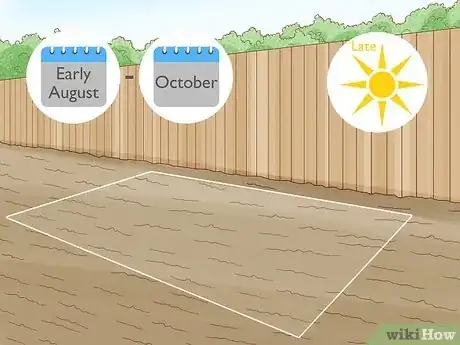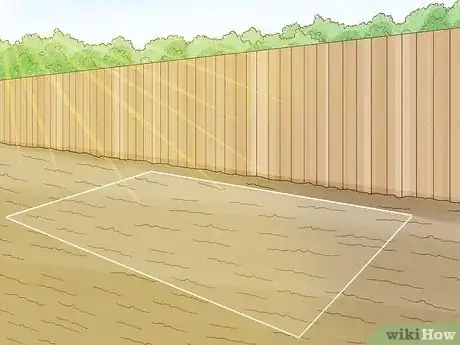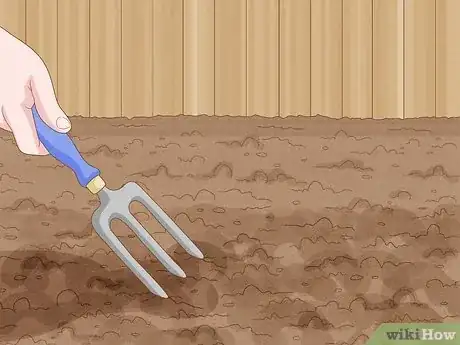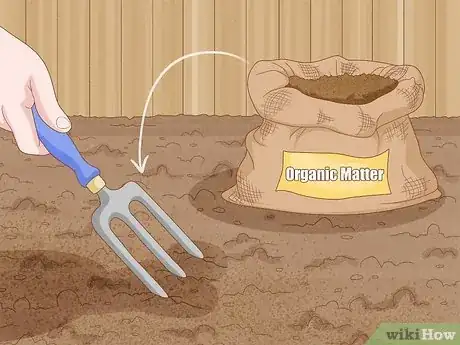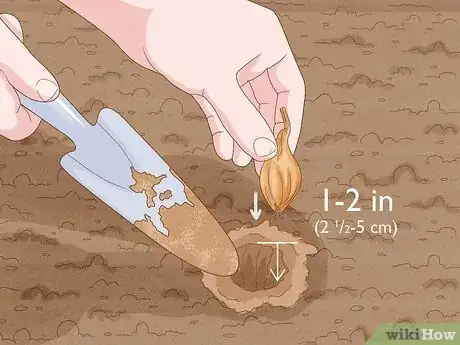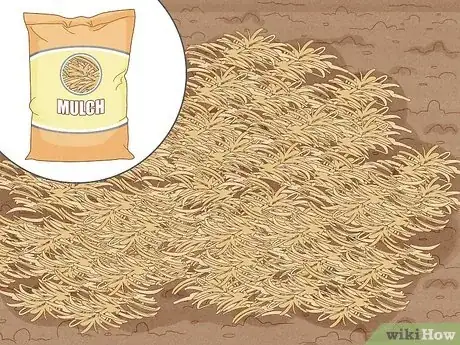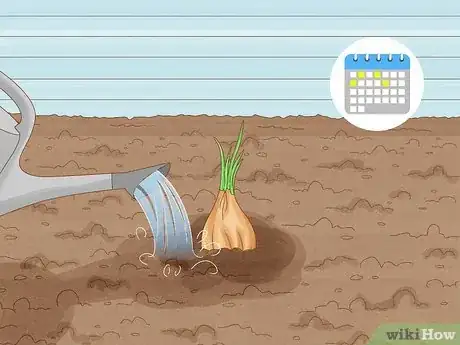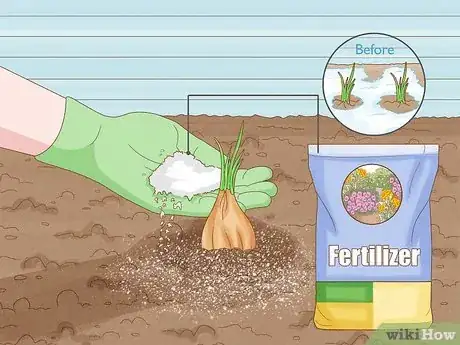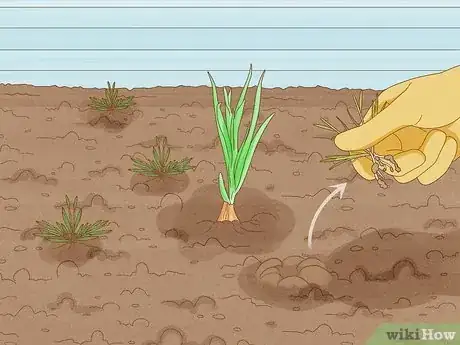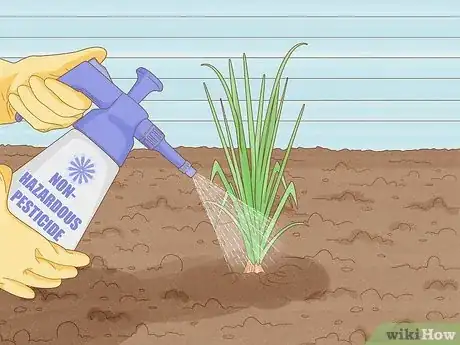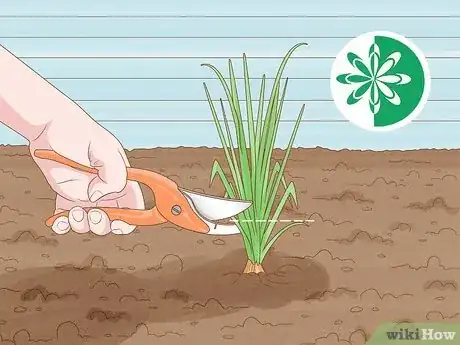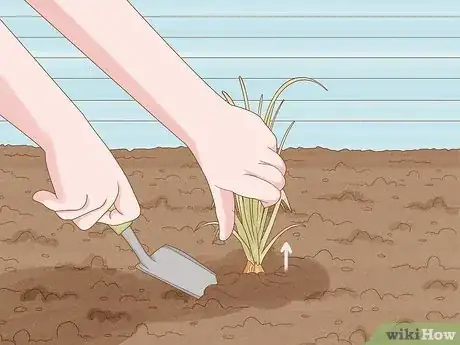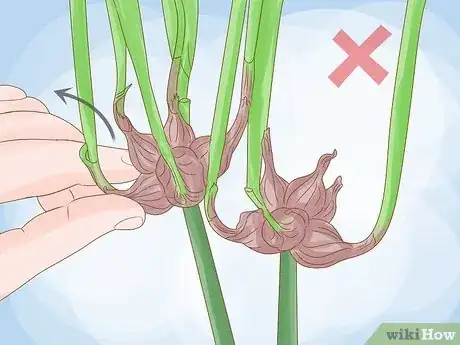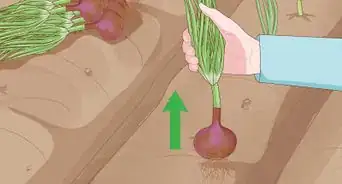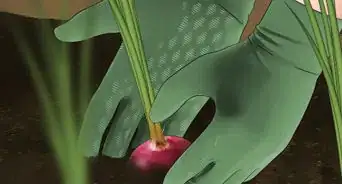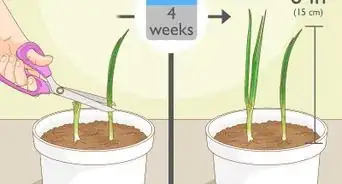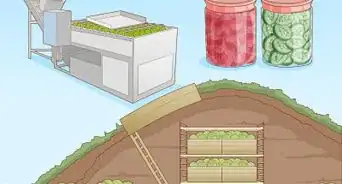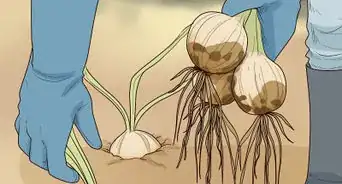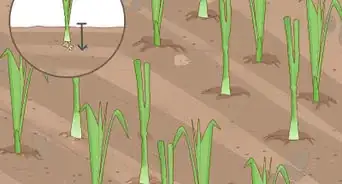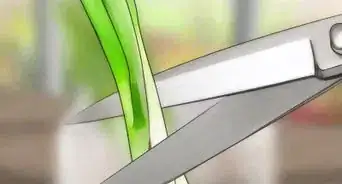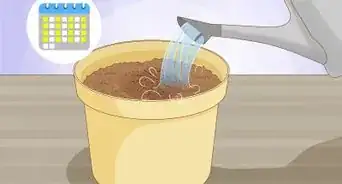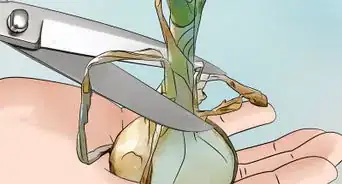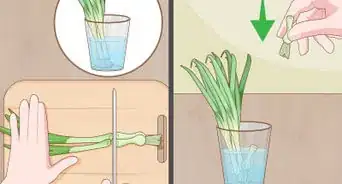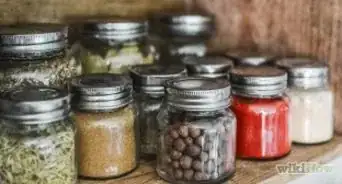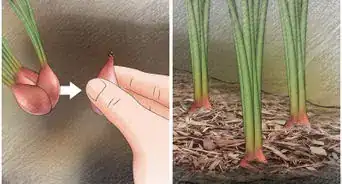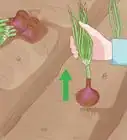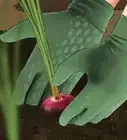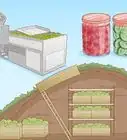wikiHow is a “wiki,” similar to Wikipedia, which means that many of our articles are co-written by multiple authors. To create this article, 11 people, some anonymous, worked to edit and improve it over time.
There are 10 references cited in this article, which can be found at the bottom of the page.
wikiHow marks an article as reader-approved once it receives enough positive feedback. In this case, 100% of readers who voted found the article helpful, earning it our reader-approved status.
This article has been viewed 176,055 times.
Learn more...
Winter onions are an extremely large, hardy vegetable that can survive in cold temperatures. Typically, the majority of their growth occurs over the winter months. Most winter onions are also considered “walking onions,” which means that they produce a top bulblet that, if left alone, topples to the ground and replants itself, causing the onion to “walk” around the garden.[1] Winter onions of all varieties are easy to plant and care for. Start them from sets—small pre-grown bulbs—for best results.
Steps
Planting
-
1Prepare your plot in the late summer or autumn. You can plant your sets as early as August, but many gardeners prefer to wait until October, when the weather has significantly cooled. You can even plant your sets in the early winter, as long as the ground has not become solid yet.[2]
-
2Select a sunny spot in your garden. Winter onions are hardy enough to grow in a variety of conditions, but they prefer to soak in full sun.[3]Advertisement
-
3Break up the soil. Use a rake or trowel to loosen the soil in your plot. Winter onions do best in loose, well-drained soil. Avoid using sandy soils, however, since sand causes soil to lose moisture a little too quickly, preventing your onions from soaking in all the nutrients they need to thrive.
-
4Mix organic matter into the soil. Sterilized compost is a popular choice. Organic matter provides additional nutrients and may improve the soil's ability to retain proper moisture levels.
-
5Plant each set 1 to 2 inches (2 1/2 to 5 centimeters) deep. Gently push the set into the ground until it is just below soil level. Cover it with additional soil if necessary, gently packing the soil over the bulb.[4]
-
6Space sets 4 to 6 inches (10 to 15 centimeters) apart within each row. Each row should also be spaced about 1 foot (30 centimeters) apart.[5]
-
7Cover your planted sets with a heavy layer of mulch. The mulch allows the soil to retain moisture longer and also keeps the onions a little warmer than they would be if the soil remained exposed.
Care and Harvest
-
1Water the onions twice a week for the first two weeks. After that, avoid watering the onions at all, especially once the ground has frozen. Once the weather warms up again, water the onions only if you experience a drought and the soil looks hard, cracked, and dry.[6]
-
2Give your onions two doses of fertilizer. The first dose should come shortly before the first heavy freeze. If you live in an area where it does not freeze, apply the first dose of fertilizer any time from late October through November. The second dose should be in the early summer, before harvest.
-
3Weed the area. Throughout the majority of the growing season, weeds do not pose much problem. When you do see weeds, however, you should yank them up immediately, either by hand or by using a sharp hoe. Weeds will compete with your onions for nutrients in the soil, causing a small, dehydrated crop.
-
4Watch out for pests. You will not have much of a pest problem throughout the majority of the growing period, but if you notice any pests once the weather warms up, use a non-hazardous pesticide to kill or ward them off.
-
5Harvest onion greens at any time during the spring. Once the greens reach several inches (10 centimeters or so) in height, you can snip them off with shears. They have a mild flavor but work well in many recipes that call for onions.[7]
-
6Harvest onion bulbs once the tops go brown. This usually occurs anytime from the late spring to the early autumn, depending on when you planted your sets. Due to the lengthy growing period, winter onions have notably large root bulbs. Tug on the tops until the bulb comes out or pry them out with a garden fork. Dust off as much soil as possible before setting them out to dry.[8]
-
7Allow a few of the bulbs to "walk." The most common winter onion is the "walking onion," which produces a top bulblet. Once the bulblet grows large enough, the weight of it causes it to sink to the ground and plant itself. Oftentimes, you can still snip off the stem and the ground bulb after this occurs. Allowing the bulblets to replant themselves ensures a crop for next year.
Community Q&A
-
QuestionIs it the same for garlic?
 Community AnswerYes and no. Garlic has the same growing conditions, but takes shorter to grow. It can also be grown in cuts (cut pieces of garlic).
Community AnswerYes and no. Garlic has the same growing conditions, but takes shorter to grow. It can also be grown in cuts (cut pieces of garlic). -
QuestionCan I separate the onions that I planted in October, which are now multiplying in January, and replant during winter?
 Community AnswerYes. Just make sure you do it carefully and slowly.
Community AnswerYes. Just make sure you do it carefully and slowly. -
QuestionI planted my onions a little late from seed. Should I leave them in the ground or pull them and let them dry out and store and replant next spring?
 Community AnswerOnions are all year-round plants, you really don't have to take them out of the ground. Even if the packet you got the seeds in says differently. Ensure you continue to care for them and they will reach the desired size.
Community AnswerOnions are all year-round plants, you really don't have to take them out of the ground. Even if the packet you got the seeds in says differently. Ensure you continue to care for them and they will reach the desired size.
Warnings
- Always check the label before selecting a chemical product, like a fertilizer or pesticide, to use on your onions. Many products can be toxic if consumed.⧼thumbs_response⧽
Things You'll Need
- Winter onion sets
- Rake or trowel
- Watering can
- Garden shears
- Garden fork
- Fertilizer
- Compost
- Pesticide
References
- ↑ https://hortnews.extension.iastate.edu/faq/what-are-winter-onions
- ↑ https://www.tractorsupply.com/out-here_articles_garden_winter-onions
- ↑ https://morningchores.com/growing-egyptian-walking-onions/
- ↑ https://www.southernexposure.com/garlic-and-perennial-onion-growing-guide-ezp-29.html
- ↑ https://www.gardenersworld.com/how-to/grow-plants/how-to-grow-overwintering-onions/
- ↑ https://morningchores.com/growing-egyptian-walking-onions/
- ↑ http://www.vegetable-gardening-online.com/growing-egyptian-onions.html
- ↑ https://www.egyptianwalkingonion.com/
- ↑ https://theprovidentprepper.org/dried-walking-onions/
About This Article
Winter onions are a hardy vegetable that grow well in colder climates. You’ll want to plant them in a sunny spot during the fall after the temperatures have cooled. Mix some organic compost into the soil, then gently push the onion bulbs into the ground 1-2 inches apart. Cover the bulbs with mulch, which will help keep the soil moist. The onions will need to be watered twice a week for the first 2 weeks. After that, they don’t need to be watered at all. In the spring, or when they’re 10 centimeters tall, the onions will be ready for harvest. To learn how to deal with pests in your garden, read on!
